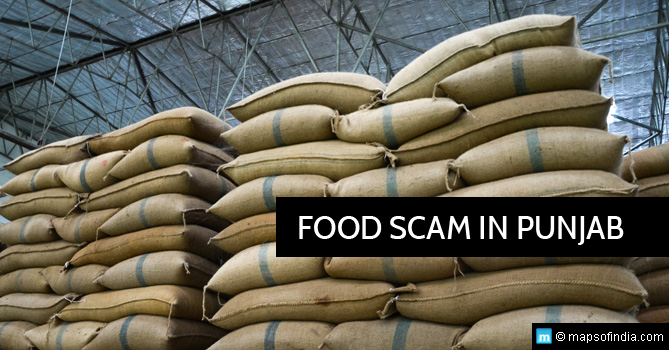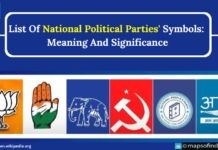This one is awkward and sticky for four stakeholders, all caught up in a controversy now being called the Punjab Food Scam, where each claims that it is not their making. The stakeholders in question are the state government of Punjab, Food Corporation of India (FCI), Reserve Bank of India (RBI), and various public sector banks led by State Bank of India (SBI).
So here’s the scenario. RBI directs public sector banks like SBI to fund the state government’s quota for grain procurement. As directed, the banks lend money to FCI which then proceeds to procure the directed amount of food grains from the open market that the state government is supposed to procure and subsequently distribute as per annual plan.
The Controversy
In response to an apparent unexplained gap between foodgrain procured on behalf of Punjab government and the actual stock available with FCI, RBI has now directed the banks to make a provision for potential non-performing assets and to allocate 15% of their earnings towards the same. 7.5% is to be set aside in March quarter and 7.5% in June quarter.
The directive of the RBI has raised a controversy amongst all stakeholders. Punjab government has refuted RBI’s claim of any shortfall in stocks or misuse of funds. As per the state government, the gap between claims and actual amount received, has caused the existing controversy and that the same is not a NPA situation.
The RBI is worried, and rightly so, as the loan exposure by various banks collectively exceeds Rs. 12,000 crore. Unofficially, some bank officials have claimed that the total exposure could be much higher and closer to Rs. 20,000 crore. Either way, the loan exposure is significant and any unplanned provision at this stage is going to negatively impact the banks’ balance sheets, which are already struggling with massive NPAs.
Is This a Turning Point in Norms for State Funding?
RBI Chief Raghuram Rajan has been trying to tame the raging bull of NPAs by pushing banks to tighten borrower’s project evaluation norms and also vigorously pursue outstanding loan recovery to bring down NPAs.
He has already built a reputation as a conservative federal regulator whose top priority is to keep inflation under control while introducing measured impetus to the economy through staggered interest rate cuts. NPAs with leading banks are causing serious concern to RBI and Rajan’s latest move could be seen as a first step to reforming the banking system.
So far, banks, especially those in public sector, were liberal in releasing funds to states under guidance from RBI and the central government. Since these were viewed as sovereign debt and therefore safe, no banks provided for any default. The recent decision by RBI has now put them in a quandary.
The Challenge Before the Banks
The challenge before banks is figuring out how to provide for 15% of their earnings over next two quarters without impacting loan disbursal to other sectors that need funding. The banks are already under pressure to meet Basel III norms, while trying to deal with rising NPAs. With this guideline coming from RBI, they will have an even tougher time managing their books.
The dilemma before the banks now is how to balance government directive for disbursal of loans with prudent loan evaluation and recovery practices, given the financial condition of most states. If banks were to tighten the squeeze on state funding, centre-state relations will get affected along with the economy, and if they were to release funds based on central directive alone, then how could they be held responsible for a subsequent loan default by states?
To address this dilemma, 65 banks led by SBI are due to meet with RBI top brass on 18 April to discuss concerns regarding the Punjab situation as also future policy and norms on state financing. What is at stake is Rs 71 lakh crore in non-food credit and Rs 1 lakh crore in food credit. Those are serious numbers.
So where are the grains?
Prakash Singh Badal-led administration in Punjab is under pressure with alcoholism and drug abuse touching epidemic proportions and with state elections due in 2017, it has had its hands full trying to ward off political attacks from an increasingly vocal Congress and Aam Aadmi Party.
The current saga involving a gap between stocks procured and existing stocks has put the state government in the corner. While it has dismissed the allegations as incorrect and a misunderstanding of the actual situation, it has not been able to adequately convince RBI and various lending banks that the Rs 12,000 crore received for foodgrain procurement is safe and will be returned as per schedule. It is the state government’s responsibility to pay interest on loans given and monitor foodgrain stocks held in various godowns in the state.
So why has the state government not been able to reconcile the actual position with FCI and set the controversy to rest? Does the RBI have good reason to believe that Rs 12,000 crore is actually at risk of turning into a NPA or is it just being cautious in a tight macroeconomic scenario. Why have the banks not followed stricter monitoring and follow-up on loans disbursed?
What has been FCI’s Response?
Surprisingly, FCI has maintained a stoic silence on this issue saying that the state government will clarify on the same. FCI has been coming under flak over the years for poor foodgrain storage and management that has often led to food grains being damaged, either due to open-air storage or losses on account of rodents eating away stocks.
Siphoning of stocks has been another problem and the current controversy only brings forth the need to review the Standard Operating Procedures of FCI to ensure that the organization optimizes its grain procurement, storage and distribution in a manner that is transparent and efficient.
Implications on Centre-State Relations
While the present scam involves the state of Punjab, other states will certainly be affected in future if banks are now made accountable for loans disbursed to states and have to provide for potential losses. Any allocation for the same will impact the amount available with banks and restrict flow of capital to other sectors of the economy.
The Finance Ministry has to sit down with RBI, banks and all state governments, to establish clear and well defined norms for loan access and disbursal, which ensures that states are made more accountable while banks are not penalized for actions they take under guidance from the centre or the regulator.




